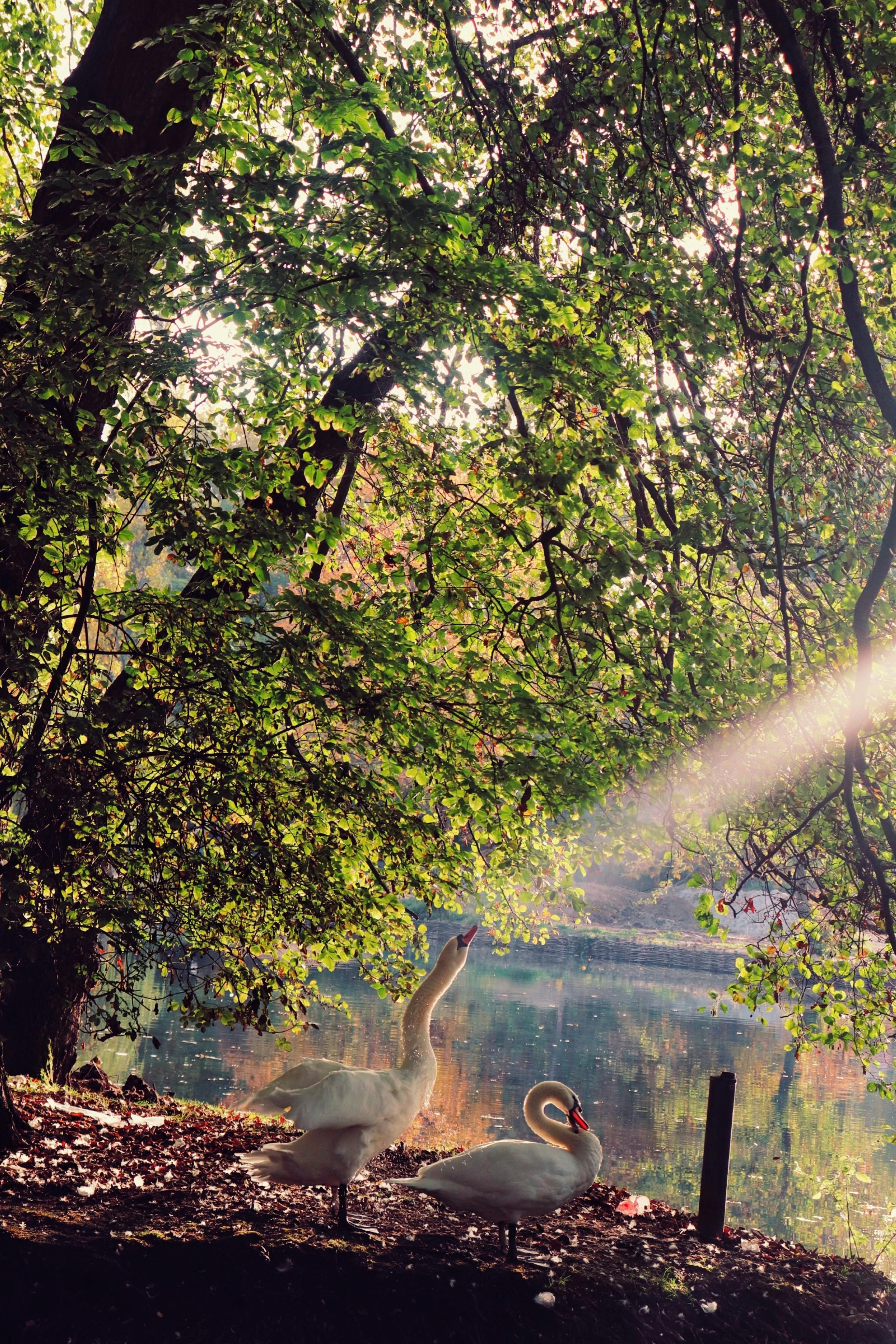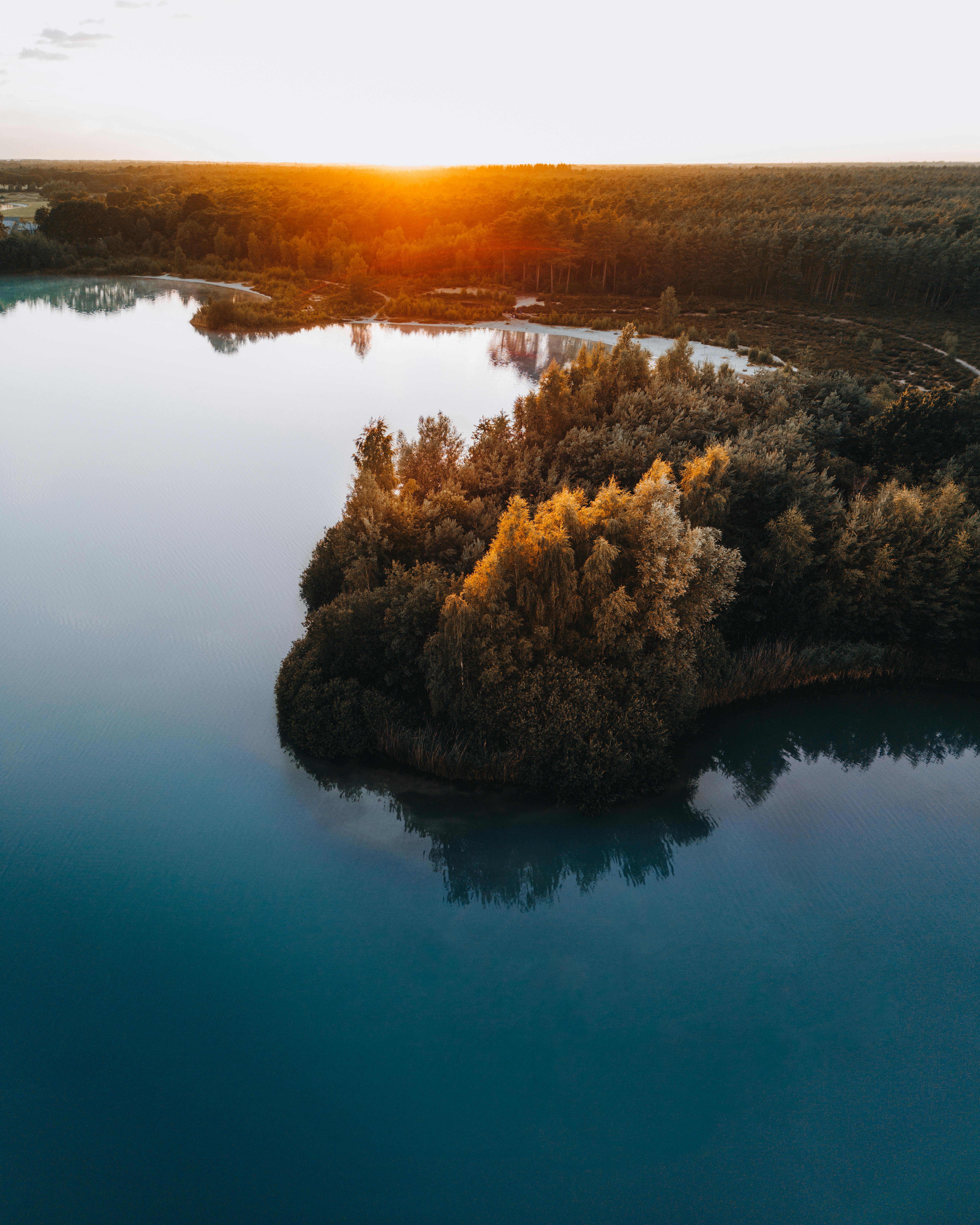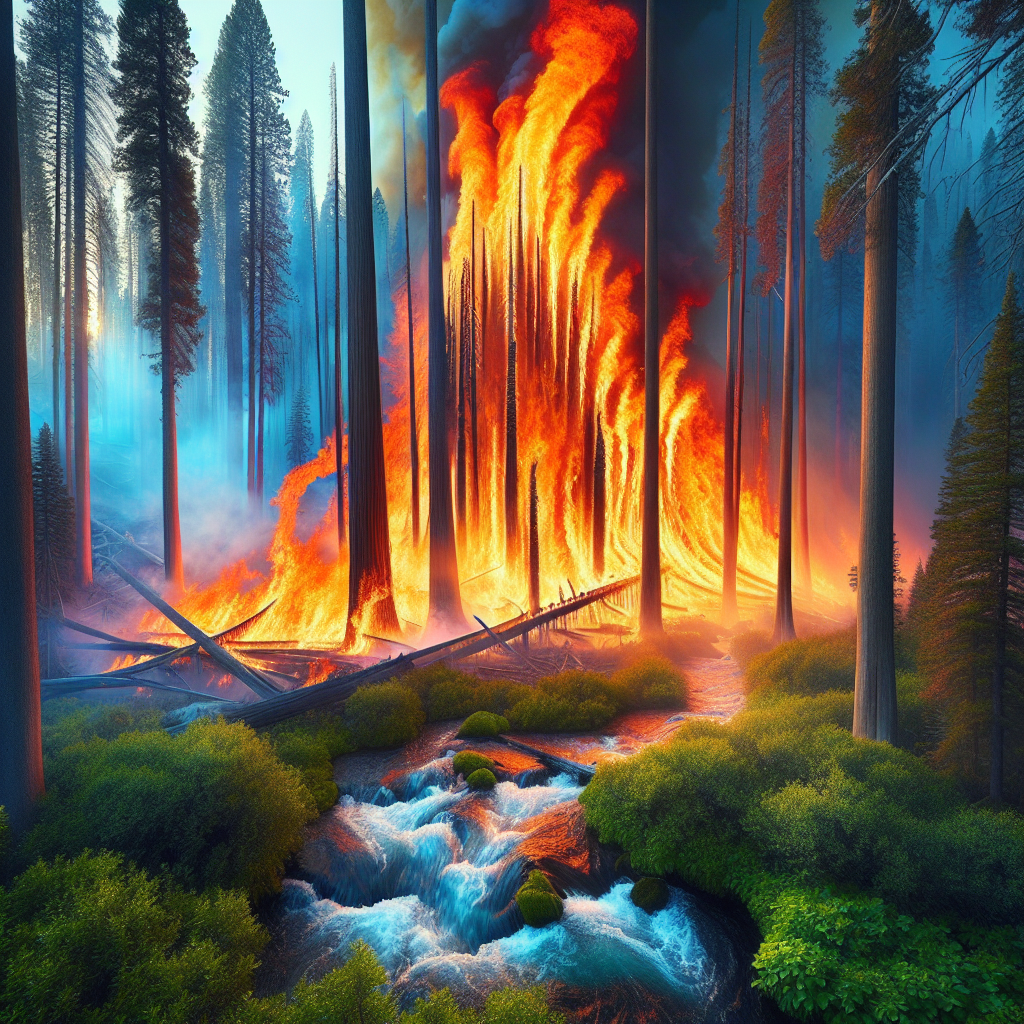Imagine a breathtaking landscape, painted in vibrant hues of green and gold. Suddenly, a flicker of orange disturbs the tranquility, growing into a roaring inferno consuming everything in its path. This is the ominous and destructive power of a wildfire. But what exactly is a wildfire? A wildfire is a quickly spreading fire that can ignite vast areas of land, driven by strong winds and fueled by dry vegetation. In this article, we will explore the causes, impacts, and measures to prevent and control these devastating natural phenomena. Strap in and prepare to uncover the fascinating world of wildfires.

Definition of Wildfire
Overview
A wildfire refers to an uncontrolled, rapidly spreading fire that occurs in vegetation, such as forests, grasslands, and shrublands. It often poses a significant threat to human lives, property, and the environment. Wildfires can vary in size, intensity, duration, and the manner in which they spread. These destructive events can devastate vast areas, leaving behind scorched landscapes and impacting ecosystems for years to come.
Causes
There are various causes of wildfires, both natural and human-induced. Natural causes include lightning strikes, volcanic activity, and spontaneous combustion. However, the majority of wildfires are ignited by human activities such as campfires left unattended, discarded cigarettes, and intentional arson. Human-caused wildfires are a pressing concern as they are often preventable through responsible behavior and adherence to fire safety guidelines.
Characteristics
Wildfires exhibit several distinctive characteristics that contribute to their destructiveness. They can release a massive amount of heat, resulting in a surge of convective columns that can produce extreme fire behavior. Wildfires also generate intense heat, strong winds, and create their weather conditions. These phenomena can greatly influence the spread and direction of the fire, making them challenging to contain and control.
Types of Wildfires
Surface Fires
Surface fires are the most common type of wildfires and primarily burn the underbrush and ground debris in forests and grasslands. These fires typically move along the forest floor, consuming vegetation, and small trees. Surface fires can travel at an average speed of 6 to 10 miles per hour, but their intensity can vary depending on factors such as fuel availability, weather conditions, and topography.
Ground Fires
Ground fires, as the name suggests, occur beneath the surface and can smolder for extended periods without visible flames. They typically burn organic material such as peat, leaves, and tree roots. These fires can be challenging to detect and control as they often spread undetected through root systems, traveling significant distances and causing damage to the ecosystem’s vital underground infrastructure.
Crown Fires
Crown fires are the most severe and dangerous type of wildfires. They spread rapidly through the upper canopy layer of forests, igniting tree crowns. These fires pose a significant threat to both the environment and human safety, as they can generate extreme heat, create erratic fire behavior, and produce large amounts of smoke. Crown fires can move swiftly, leaping from tree to tree and covering vast distances in a short period, making them difficult to extinguish.
Factors Affecting Wildfires
Weather Conditions
Weather conditions play a crucial role in wildfire behavior. Dry and hot weather, combined with low humidity and strong winds, create an ideal environment for wildfires to start and spread rapidly. High temperatures increase fuel dryness, making vegetation more flammable. Wind speed and direction can influence the rate and direction of fire spread, while relative humidity affects fuel moisture content. Severe weather conditions enhance the intensity and severity of wildfires, making them harder to control.
Fuel Availability
Fuel availability is another significant factor influencing wildfires. Wildfires require fuel, including trees, plants, and other vegetation, to sustain their flames. The abundance, composition, and arrangement of fuel can affect the fire’s intensity, rate of spread, and duration. Dry and dead vegetation, such as fallen leaves or timber, contribute to increased fuel load and create favorable conditions for intense fires. Fuel management practices, including controlled burns and vegetation removal, can help mitigate the risks posed by excessive fuel accumulation.
Topography
The topography of an area greatly influences the behavior and spread of wildfires. Steep slopes can accelerate fire spread through the upslope movement of hot gases, flames, and burning embers. Narrow canyons or gullies can also channel fire, increasing its intensity and allowing it to leap over natural firebreaks. In contrast, flat terrain can slow down the fire spread, providing an opportunity for firefighters to control and contain the blaze more effectively. Understanding and considering the topography is vital for effective wildfire management.
Wildfire Spread
Fire Behavior
Understanding fire behavior is essential for firefighters and disaster management teams when combating wildfires. Fire behavior refers to how a fire interacts with its environment, including fuel, weather, and topography. Different factors, such as fuel type, wind, and slope, can shape fire behavior. Wildfires can exhibit various fire behaviors, including smoldering, flaming, or torching, which influence how they spread and the risks they pose to human lives, property, and the environment.
Rate of Spread
The rate at which a wildfire spreads can vary significantly depending on multiple factors. Surface fires generally spread more slowly, at an average rate of 6 to 10 miles per hour. Crown fires, on the other hand, can travel at an astonishing speed of up to 15 miles per hour, driven by the rapid ignition and combustion of tree canopies. The rate of spread is influenced by fuel availability, weather conditions, topography, and the presence or absence of firefighting resources.
Direction of Spread
The direction of a wildfire’s spread is influenced by numerous factors, including wind patterns, fuel distribution, and topography. High winds can push the fire in a particular direction, increasing its speed and making it harder to control. The slope of the land can also affect the direction of spread, as fires tend to travel faster uphill due to the rising hot gases. Additionally, the arrangement of fuel can create fire corridors, causing the fire to spread in a particular direction, affecting fire management strategies.

Impacts of Wildfires
Ecological Effects
Wildfires have significant ecological impacts on natural ecosystems. While fire is a natural process and can have some positive effects on certain ecosystems, such as promoting seed germination and controlling invasive species, severe and uncontrolled wildfires can be devastating. They can result in the loss of habitat for wildlife, destruction of plant communities, and depletion of soil nutrients. Post-fire recovery can take years, impacting the overall biodiversity and disrupting ecosystem dynamics.
Environmental Effects
The environmental effects of wildfires are far-reaching and can have implications beyond the immediate burned areas. The intense heat generated by wildfires can release massive amounts of greenhouse gases into the atmosphere, contributing to climate change. The smoke and ash produced during fires can pollute air quality, creating health hazards for both humans and wildlife. Additionally, the erosion of burned areas can contaminate water sources and impair water quality, affecting aquatic ecosystems and water supplies.
Economic Effects
Wildfires can have significant economic repercussions for communities and regions affected by their devastation. The destruction of homes, infrastructure, and businesses can result in substantial financial losses. The costs of firefighting efforts, emergency response, and post-fire rehabilitation can be astronomical. Additionally, industries dependent on natural resources, such as timber or agriculture, can suffer long-term economic setbacks due to the loss of productive land and resources.
Health Effects
Wildfires not only impact the natural environment and the economy but also pose serious health risks. The smoke emitted during wildfires contains harmful pollutants, including particulate matter, carbon monoxide, and toxic gases. Exposure to these pollutants can cause respiratory problems, exacerbate existing health conditions, and increase the risk of cardiovascular diseases. Vulnerable populations, such as the elderly, children, and individuals with respiratory ailments, are particularly susceptible to the health effects of wildfire smoke.
Fire Suppression and Control
Firefighters
Firefighters play a crucial role in suppressing and controlling wildfires. These brave individuals are on the front lines, battling the flames and protecting lives and property. They receive extensive training in fire behavior, suppression techniques, and emergency response. Equipped with specialized firefighting gear and tools, firefighters work together to contain and extinguish wildfires, often risking their own safety. Their dedication and expertise are fundamental in minimizing the damage caused by wildfires.
Aerial Firefighting
Aerial firefighting involves the use of aircraft to combat wildfires from the air. These aircraft, including helicopters and fixed-wing planes, can deliver water, fire retardants, and suppressant chemicals to extinguish flames and create firebreaks. Aerial firefighting is particularly valuable in reaching inaccessible areas, providing rapid response, and supporting ground crews. The coordinated efforts between ground and aerial firefighting teams are vital in successfully controlling and suppressing wildfires.
Ground Firefighting
Ground firefighting involves firefighters and emergency personnel working directly at the fire’s edge. They use various techniques and tools to control the fire’s spread, including clearing vegetation to create firebreaks, building containment lines, and extinguishing flames using hoses and water pumps. Ground crews also conduct controlled burns, intentionally lighting fires within a specified area to remove fuel and prevent the fire from spreading further. Their hands-on work is critical in combating wildfires and protecting communities.
Preventive Measures
Preventing wildfires is essential in mitigating their devastating impacts. Various preventive measures can be taken to reduce the risk of wildfires, such as implementing fire restrictions and bans during dry seasons, educating the public on responsible fire practices, and enforcing fire safety regulations. Land management practices, including controlled burns and fuel reduction efforts, can also decrease the likelihood of severe wildfires. Early detection systems, such as fire lookout towers and remote sensing technologies, aid in the prompt detection and response to wildfires.

Wildfire Management
Fire Management Agencies
Fire management agencies at local, state, national, and international levels are responsible for planning, coordinating, and implementing strategies to manage and mitigate wildfires. These agencies include fire departments, forest services, and disaster management organizations. They collaborate with various stakeholders, including government agencies, landowners, and community groups, to develop comprehensive wildfire management plans. The primary goals of these agencies are to protect lives, property, and natural resources while minimizing the environmental impact of wildfires.
Fire Management Techniques
Fire management techniques encompass a range of strategies employed to prevent, suppress, and control wildfires. These techniques include fuel management practices, such as prescribed burns, which remove excess vegetation and reduce fuel loads. Creating firebreaks, clearing vegetation along roads and strategic areas, can help contain a fire’s spread. Early detection systems, public education programs, and community engagement are also integral components of effective fire management. Adopting a multi-faceted approach ensures the successful management of wildfires.
Prescribed Burns
Prescribed burns, also known as controlled burns or prescribed fires, are planned and intentionally ignited fires used for vegetation management and hazard reduction. These fires are conducted under controlled conditions, with careful consideration of weather, fuel conditions, and fire behavior. Prescribed burns mimic the natural role of fire in ecosystems and help to prevent uncontrolled wildfires by reducing fuel loads and promoting the growth of fire-resistant plant species. They are an essential tool in wildfire prevention and ecosystem management.
Firebreaks
Firebreaks are strategically cleared areas or barriers that impede the spread of wildfires. They are created by removing vegetation, such as grass, trees, and shrubs, to create gaps or wide strips that act as buffers. Firebreaks can be natural, such as rivers or roads, or man-made, constructed using heavy machinery or hand tools. These breaks help control the fire’s advance, providing a safe zone for firefighters to take defensive actions and protect structures. Well-maintained firebreaks are critical in impeding the spread of wildfires and safeguarding communities.
Wildfire Prevention
Public Education
Public education plays a pivotal role in wildfire prevention. Informing communities about the causes and risks of wildfires, promoting responsible fire practices, and educating individuals on how to report and prevent wildfires are essential. Public education campaigns raise awareness about fire safety, including the proper use and extinguishing of campfires, disposal of cigarette butts, and precautions during dry seasons. By empowering individuals with knowledge, communities can actively participate in preventing wildfires and protecting their environment.
Fire Regulations
Fire regulations and legislation serve as crucial tools in preventing human-caused wildfires. Clear and enforceable regulations on campfire usage, burning of yard waste, and outdoor activities during fire-prone conditions aid in reducing the risk of accidental ignitions. Fire restrictions and bans during periods of high fire danger are implemented to minimize the chances of wildfires starting. Strict enforcement of these regulations, coupled with public education and awareness, are vital components in preventing wildfires.
Vegetation Management
Proactive vegetation management practices are fundamental in reducing the severity and impacts of wildfires. Landowners, including private individuals, businesses, and public agencies, can contribute to wildfire prevention by implementing fuel reduction measures. These measures may include thinning overgrown vegetation, removing dead trees and other fuel sources, and creating defensible space around structures. Landscaping with fire-resistant plant species and maintaining a well-maintained property can significantly decrease the risk of wildfires and protect property.

Global Wildfire Trends
Frequency and Intensity
Observations suggest that the frequency and intensity of wildfires have been increasing globally. This trend can be attributed to various factors, including climate change, land-use changes, and human activities. Rising temperatures and changing precipitation patterns contribute to drier conditions, increasing the likelihood of wildfires. Furthermore, encroachment into natural areas, expansion of urban-wildland interfaces, and inadequate land management practices have elevated the risk of wildfires globally. Continual monitoring, research, and proactive measures are necessary to address this escalating global issue.
Climate Change Impact
Climate change plays a significant role in exacerbating wildfire risks and impacts. The warming climate, combined with prolonged droughts and the alteration of precipitation patterns, creates more favorable conditions for wildfires to ignite and spread. Higher temperatures promote the drying of vegetation, increasing its flammability. Climate change also affects wind patterns, potentially intensifying fire behavior and making fires more erratic. Adapting to and mitigating climate change are crucial in managing and minimizing the destructive impacts of wildfires.
Wildfire Safety Tips
Evacuation Procedures
Being prepared for a wildfire and understanding evacuation procedures are essential for personal safety. Stay informed and heed evacuation orders given by local authorities. Have an emergency evacuation plan in place, including identifying safe evacuation routes, establishing a communication plan with family members, and preparing emergency supplies. Pack important documents, medication, and essential items beforehand to ensure a smooth evacuation process. Remember to follow the instructions of emergency responders and prioritize personal safety during a wildfire event.
Emergency Kits
Preparing emergency kits is crucial to ensuring personal safety and well-being during a wildfire. Include essential items such as drinking water, non-perishable food, a first aid kit, flashlight, batteries, a battery-powered radio, personal hygiene products, and a change of clothing. Additionally, have copies of important documents, such as identification cards, insurance policies, and medical records, stored in a waterproof container. Regularly check and replenish your emergency kits to ensure that they are up to date and readily accessible during a wildfire event.
Air Quality Protection
During a wildfire event, air quality can significantly deteriorate, posing health risks to individuals, particularly those with respiratory conditions. Stay informed about air quality conditions by monitoring local reports or utilizing air quality index websites. If advised or necessary, limit outdoor activities, keep windows and doors closed to prevent smoke from entering your home, and use air purifiers or filtration systems if available. Consider wearing N95 masks or respirators to reduce exposure to smoke particles. Prioritize your health and take necessary precautions to maintain good air quality indoors.
In conclusion, understanding wildfires, their causes, characteristics, and impacts is crucial for effective management and prevention. By implementing appropriate preventive measures, embracing responsible fire practices, and supporting firefighting efforts, individuals, communities, and governments can work together to minimize the devastating effects of wildfires and protect lives, property, and the environment. Combating wildfires requires a collective effort and a shared responsibility to build resilient communities and preserve our natural landscapes for future generations.






